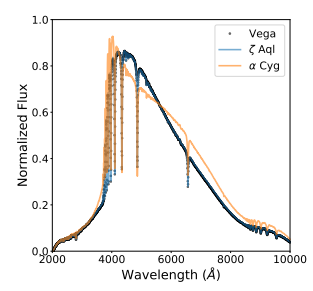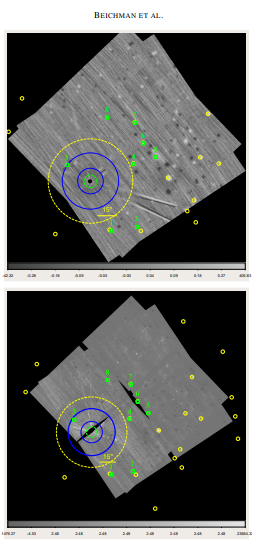2024-11-01 アリゾナ大学
<関連情報>
- https://news.arizona.edu/news/astronomers-see-debris-disk-around-young-star-vega-unprecedented-detail
- https://arxiv.org/abs/2410.24042
- https://arxiv.org/abs/2410.16551
ハッブル宇宙望遠鏡によるベガ周辺の散乱光塵ハローのディープサーチ Deep Search for a scattered light dust halo around Vega with the Hubble Space Telescope
Schuyler G. Wolff, András Gáspár, George H. Rieke, Jarron M. Leisenring, Kate Su, David Wilner, Luca Matrà, Marie Ygouf, Nicholas P. Balleringa
ArXiv Submitted on 31 Oct 2024
DOI:https://doi.org/10.48550/arXiv.2410.24042

Abstract
We present a provisory scattered light detection of the Vega debris disk using deep Hubble Space Telescope coronagraphy (PID 16666). At only 7.7 parsecs, Vega is immensely important in debris disk studies both for its prominence and also because it allows the highest physical resolution among all debris systems relative to temperature zones around the star. We employ the STIS coronagraph’s widest wedge position and classical Reference Differential Imaging to achieve among the lowest surface brightness sensitivities to date (∼4μJy/arcsec2) at wide separations using 32 orbits in Cycle 29. We detect a halo extending from the inner edge of our effective inner working angle at 10′′.5 out to the photon noise floor at 30′′ (80 – 230 au). The face-on orientation of the system and the lack of a perfectly color-matched PSF star have provided significant challenges to the reductions, particularly regarding artifacts from the imperfect color matching. However, we find that a halo of small dust grains provides the best explanation for the observed signal. Unlike Fomalhaut (a close twin to Vega in luminosity, distance, and age), there is no clear distinction in scattered light between the parent planetesimal belt observed with ALMA and the extended dust halo. These HST observations complement JWST GTO Cycle 1 observations of the system with NIRCam and MIRI.
ジェイムズ・ウェッブ宇宙望遠鏡によるベガを周回する惑星の探査 Searching for Planets Orbiting Vega with the James Webb Space Telescope
Charles Beichman, Geoffrey Bryden, Jorge Llop-Sayson, Marie Ygouf, Alexandra Greenbaum, Jarron Leisenring, Andras Gaspar, John Krist, George Rieke, Schuyler Wolff, Kate Su, Klaus Hodapp, Michael Meyer, Doug Kelly, Martha Boyer, Doug Johnstone, Scott Horner, Marcia Rieke
ArXiv Submitted on 21 Oct 2024]
DOI:https://doi.org/10.48550/arXiv.2410.16551

Abstract
The most prominent of the IRAS debris disk systems, α Lyrae (Vega), at a distance of 7.7 pc, has been observed by both the NIRCam and MIRI instruments on the James Webb Space Telescope (JWST). This paper describes NIRCam coronagraphic observations which have achieved F444W contrast levels of 3×10−7 at 1\arcsec\ (7.7 au), 1×10−7 at 2\arcsec\ (15 au) and few ×10−8 beyond 5\arcsec\ (38 au), corresponding to masses of < 3, 2 and 0.5 MJup for a system age of 700 Myr. Two F444W objects are identified in the outer MIRI debris disk, around 48 au. One of these is detected by MIRI, appears to be extended and has a spectral energy distribution similar to those of distant extragalactic sources. The second one also appears extended in the NIRCam data suggestive of an extragalactic this http URL NIRCam limits within the inner disk (1\arcsec\ –10\arcsec) correspond to a model-dependent masses of 2∼3 \mj. \citet{Su2024} argue that planets larger even 0.3 MJup would disrupt the smooth disk structure seen at MIRI wavelengths. Eight additional objects are found within 60\arcsec\ of Vega, but none has astrometric properties or colors consistent with planet candidates. These observations reach a level consistent with expected Jeans Mass limits. Deeper observations achieving contrast levels <10−8 outside of ∼4\arcsec\ and reaching masses below that of Saturn are possible, but may not reveal a large population of new objects.



